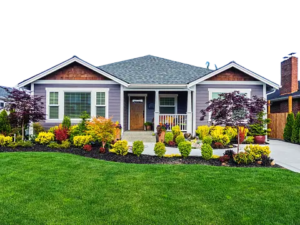If you’re thinking of downsizing, or are perhaps searching for a retirement home, you may have come across the option of purchasing a park home.
But what exactly is a park home, and how does it stack up to living in a traditional home?
What is a park home?
Park homes are detached bungalows which are usually sited on a special site with multiple pitches.
It’s important to know that unlike holiday lodges they are permanent residences, just like any traditional home and are built to a very high standard.
Construction
One of the biggest ways in which park homes differ from brick-and-mortar ones is the way in which they are built.
Park homes are actually constructed off-site in a manufacturing plant, before being transported to the park itself, where it will be erected on the pitch and hooked up the site’s electricity, water and gas.
For a more detailed look at how park homes are constructed, check out this piece from park home manufacturers Omar.
Park homes are built to a very high standard, are very well insulated and are usually fitted with central heating, double glazing and energy-efficient boilers.
Most are also usually fully furnished although you can often opt for an unfurnished option.
Size
As you can imagine, park homes are a lot smaller than most traditional homes however their size does vary.
They’re usually just one floor although they contain everything you’d expect such as a sitting room, dining area, fully fitted kitchens and bathrooms and as many as three bedrooms in some cases.
But the smaller size of park homes isn’t an issue for many, and in fact, it’s a reason many residents choose them as they’re perfect for downsizing.
Price
A major benefit of choosing to live in a park home is the price. While traditional homes will require a mortgage or at least some form of loan, park homes are a lot more affordable.
While of course, each park home is different, and the prices will vary, you’ll be unlikely to pay more than £100,000 for one, with average prices ranging from around £30,000 to £80,000.
While these are just estimates, and you’ll also have to factor in the cost of monthly pitch fees you’re always going to get a better deal financially when it comes to a park home.
Ownership
With a traditional home, it’s fairly straightforward, if you purchase a property, it’s yours to do with what you please.
When it comes to park homes, while you do still own the home itself, you don’t actually own the pitch (or land) that it is situated on.
This means that while you can do whatever you want to the interior of the home, there may be some limitations on making any changes or extensions to the exterior of your park home.
(Also, remember that the park owner is entitled to 10% of any sale price is you sell your park home in the future).
Lifestyle
The ultimate difference between traditional homes and park homes isn’t as tangible as the way it’s built, it’s the way of life.
Park home living is a much more laid back lifestyle, well suited to the elderly and those who prefer a bit of peace and quiet.
Most parks are situated well away from other residential areas (many are by the sea) and some even have age restrictions (either over 50s only or no children) and rules banning pets.
The community spirit of park home living, with everyone looking out for one another is one of the major reasons it’s so popular.
So if you are considering purchasing a park home, Sell My Park Home is a good place to start your search.
While it certainly is a different way of living than you might be used to, it certainly has its benefits, and you can still expect all the home comforts that you’re used to.

Leave a Reply
You must be logged in to post a comment.